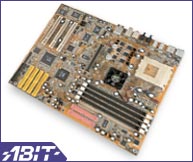| Feature Name |
Description |
Requirements |
Programming Model |
| Power Management Timer |
24-bit/32-bit free running timer.
|
Required for ACPI compatibility.
|
Fixed Feature Control Logic. |
| Power Button |
User pushes button to switch the
system between the working and sleeping states. |
Must have either a power button
or a sleep button. |
Fixed Feature Event and Control
Logic or Generic Event and Logic |
| Power Button Over-ride |
User sequence (press the power button
for 4 seconds) to turn off a hung system. |
This or a similar function required.
|
|
| Real Time Clock Alarm |
Programmed time to wake-up the system.
|
Required for ACPI compatibility
(for S1-S3; optional for (S4). |
Optional Fixed Feature Event[1]
|
| Sleep/Wake Control Logic |
Logic used to transition the system
between the sleeping and working states. |
Required for ACPI compatibility.
At least one sleeping state needs to be supported. |
Fixed Feature Control and Event
Logic. |
| Embedded Controller Interface |
ACPI Embedded Controller protocol
and interface, as described in section 13. |
Optional. |
Generic Event Logic, must reside
in the general purpose register block. |
| Legacy/ACPI Select |
Status bit to indicates the system
is using the legacy or ACPI power management model (SCI_EN).
|
Required. Status bit indicates the
mode of a legacy/ACPI platform. |
Fixed feature Control Logic. |
| Lid switch |
Button used to indicate whether
the system¡¦s lid is open or closed (mobile systems only). |
Optional, strongly recommended for
mobile systems. |
Generic Event Feature. |
| C1 Power State |
Processor instruction to place the
processor into a low-power state. |
This is a required feature. |
Processor ISA. |
| C2 Power Control |
Logic to place the processor into
a C2 power state. |
Optional, strongly recommended for
mobile systems. |
Fixed Feature Control Logic. |
| 3 Power Control |
Logic to place the processor into
a C3 power state. |
Optional, strongly recommended for
mobile systems. |
Fixed Feature Control Logic. |
| Thermal Control |
Logic to generate thermal events
at specified trip points. |
Optional |
Generic Event and Control Logic.
See description of thermal logic in section 3.9. |
| Device Power Management |
Control logic for switching between
different device power states. |
Optional, strongly recommended for
mobile systems. |
Generic control logic. |
| AC Adapter |
Logic to detect the insertion and
removal of the AC adapter. |
Optional |
Generic event logic |
| Docking/device insertion and removal
|
Logic to detect device insertion
and removal events |
Optional |
Generic event logic |
[1] RTC wake-up alarm is required; the fixed feature status bit is
optional. 